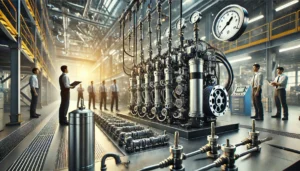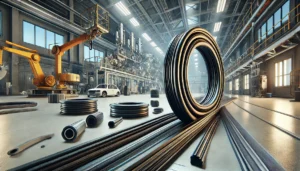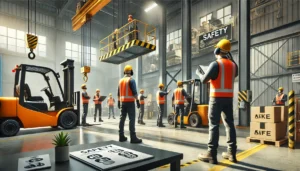In every industry, measurement instruments must be accurate and dependable in order to optimize performance, quality of the product, as well as safety. The process of adjusting and verifying the accuracy of the instruments, also known as calibration, ensures reliable and accurate measurements. To make sure there is reduction in costly mistakes, compliance to regulations, and increased instrument lifespan, regular calibration is important. Effective calibration practices not only improve operational efficiency but also reduce the chances of system failures, saving both money and increasing safety.
Understanding Calibration
Calibration is done by measuring readings that an instrument provides and comparing the value with an accepted standard to determine the degree of adjustment needed. Instruments are adjusted to ensure that the discrepancies are eliminated and they match the true values of the measured parameters. In every industry, a small deviation can lead to huge operational inefficiencies or safety risks, therefore calibration is crucial.
Importance of Calibration
- Quality Control: Regular calibration makes sure that quality control and process implementation optimization is achieved by the instruments constantly providing accurate readings.
- Regulatory Compliance: Various sectors necessitate routine calibrations of tools and equipment in order to meet their local or international requirements. Compliance guarantees that manufacturers remain compliant to the safety measures that are in place and the standards of the products.
- Operational Efficiency: Instruments that are accurate eliminates mistakes, rework, and wastage which increases productivity, reduces downtime, and saves cost.
- Safety: Inaccurate measurements can prove dangerous or life threatening especially in important areas like chemical and machinery engineering. Calibration ensures safety measures by ensuring precision of process measurement.
Best Practices for Instrument Calibration
- CAI Propose Calibration Schedule In the industrial processes, all tools and equipment need systematic calibration schedule. How often should the calibration take place is dependent on many factors for example; instrument’s importance, usage level of the instrument, its environment, and also what the equipment is set to do. Those that are used in precision working applications or high risk areas usually require increased supervision.
- Record Keeping Maintain detailed and accurate records of calibration activities logs as they are useful accumulators in assessing the tools and equipment performance over a period of time. Important information such as the instrument’s name or number which identifies it, the dates of calibration, what results were recorded, what was changed as a result, and what maintenance items have done, must be included. It not only enhances traceability but also helps in ensuring compliance with industry regulations and standards.
- Use calibrated standards that are recognized worldwide to ensure precise measurements and avoid discrepancies or errors in settings. Make sure to check these standards periodically to ascertain that they still lie within required boundaries. Calibration is one of the most critical steps in an equipment’s life cycle and needs to be thought through.
- Different personnel have different skills and knowledge, and these people need to be versed in the machine they are operating. Women’s functions are limited so it is important the sick staff is adequately replaced. A trained professional is more likely to adhere to US or ISO guidelines and effectively use the right tools in the appropriate context to undertake the aforementioned work properly.
- Schedule check ins are key in ensuring a device’s accuracy plus routine maintenance can significantly boost a device’s functionality. Attempts must be made to identify any arising problems before they result in excessive downtime of a machine. Scheduled maintenance like cleaning and recalibrating the instruments guarantees their functionality and that set standards are met.
- Pick The Right Calibration Method The method of calibration chosen for the instrument should depend on its type and the parameter that is being measured. The instrument may be calibrated using one-point, two-point, or multi-point methods where the instrument is adjusted at certain levels of measurement to check for its accuracy. Inaccurate readings from highly precise instruments will require multi-point calibration in their entire range for the most accurate output.
- Maintain Control Over Environmental Factors In the processes of calibration, constant and controlled temperature, humidity and other environmental factors should be maintained. Instruments used for calibration should be free from the errors caused due to the changes in environment. Therefore, the instruments should be calibrated under conditions that will be ideal when the instrument is in operation.
- Develop Clear Calibration Steps There should be SOPs that guide all calibration procedures to ensure that consistency is achieved. These SOPs should also be flexible enough to incorporate emerging practices, technologies, and industry policy changes.
- Use Calibration Management Systems. A Calibration Management Systems (CMS) makes the process much simpler by identifying, organizing and storing calibration records. Such systems automate reminders for upcoming calibrations, control the calibration workflow, and produce reports for audits which helps make sure calibration tasks are done on time.
- Review and Enhance Calibration Policies Calibration advantages and disadvantages must be analyzed to ensure they meet targets and objectives. Considering the advancement of technology, there has to be the incorporation of new tools and methods of performing the task. Improvements to methods claiming to best suit the instrument range are best adopted after technology evolves. This change ensures that resources do not become obsolete, and if they do, it is only at the end of useful life.
Challenges in Calibration
The following criteria must be fulfilled to ensure reliability as well as valid calibration of devices:
- Resource Constraints: Understaffing or managing faulty equipment will make it time consuming to meet set calibration time frames, mostly in large establishments where many machines and instruments require calibration.
- Complex Instrumentation: The presence of advanced instruments may involve greater sophistication in their operation in addition to new knowledge for the purpose of developing the new calibration set where ultimately the process becomes costlier.
- Data Management: Keeping track of an increasing number of instruments becomes increasingly difficult. In the absence of proper rules and guidelines to keep track of histories, errors are much more likely to occur, breaches of compliance become easier, and accountability is diminished.
- Regulatory Compliance: These regulations will be different from the previous ones, and they will require a new approach towards calibration systems and practices. Adhering to stringent and changing regulations may take an abundant amount of effort.
Conclusion
Ensuring the precision and dependability of industrial instruments requires calibration. Practices such as traceable calibration systems, regular documentation, proper calibration, and scheduling help any organization maintain their instruments accurately. Calibration helps improve operational efficiency, reduce downtime, aid in compliance, and most importantly, product quality and safety is ensured. New technologies and practices in calibration will provide more staging systems and improve the effectiveness of the instruments. As a result of calibration, businesses improve their competitiveness, lower costs, and most importantly, protect their processes.










